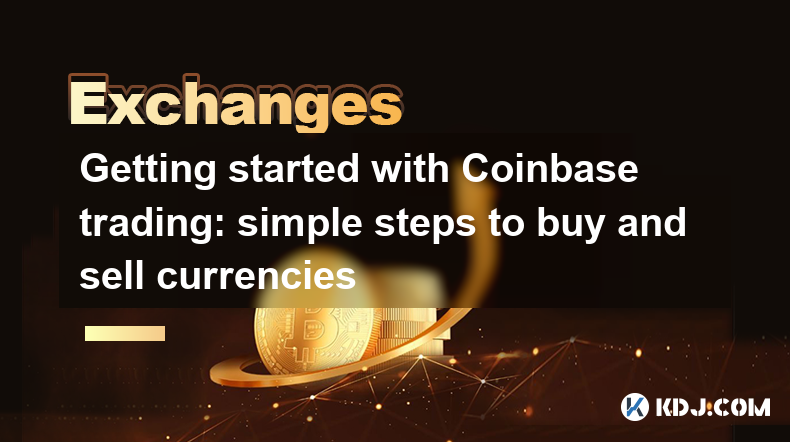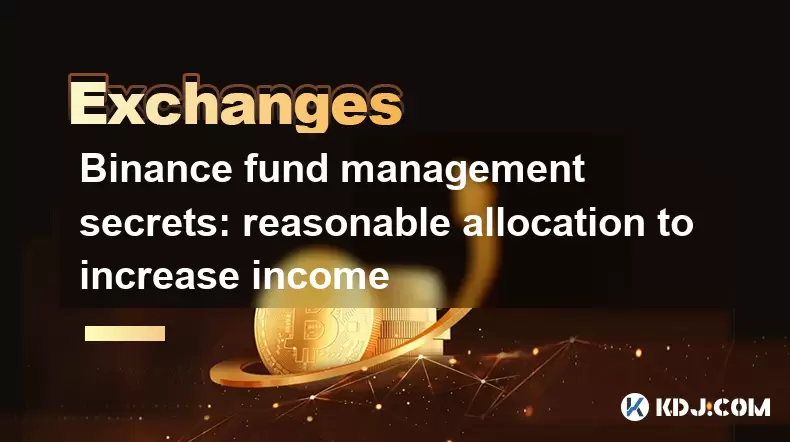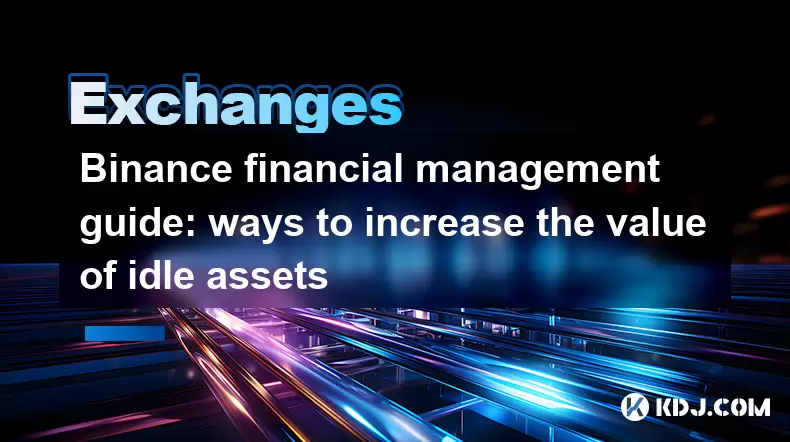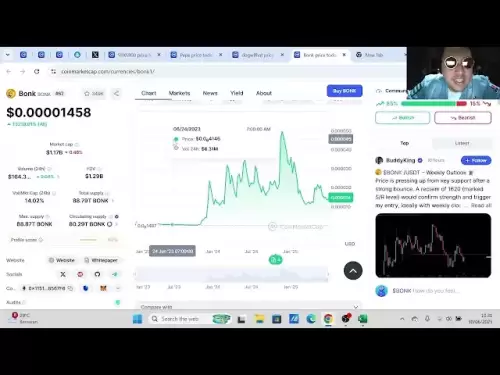-
 Bitcoin
Bitcoin $107,397.3430
-0.20% -
 Ethereum
Ethereum $2,467.5633
1.33% -
 Tether USDt
Tether USDt $1.0002
0.01% -
 XRP
XRP $2.1994
0.71% -
 BNB
BNB $655.8723
1.07% -
 Solana
Solana $157.3780
4.63% -
 USDC
USDC $1.0000
0.02% -
 TRON
TRON $0.2792
1.23% -
 Dogecoin
Dogecoin $0.1645
0.50% -
 Cardano
Cardano $0.5666
1.83% -
 Hyperliquid
Hyperliquid $39.8730
3.91% -
 Bitcoin Cash
Bitcoin Cash $514.7673
5.02% -
 Sui
Sui $2.7969
-0.51% -
 Chainlink
Chainlink $13.2880
0.07% -
 UNUS SED LEO
UNUS SED LEO $9.1148
-0.60% -
 Avalanche
Avalanche $17.9247
0.34% -
 Stellar
Stellar $0.2351
-0.98% -
 Toncoin
Toncoin $2.9456
2.69% -
 Shiba Inu
Shiba Inu $0.0...01144
-0.74% -
 Litecoin
Litecoin $85.9064
-0.62% -
 Hedera
Hedera $0.1495
1.47% -
 Monero
Monero $319.0339
3.82% -
 Polkadot
Polkadot $3.3940
-0.40% -
 Dai
Dai $1.0000
0.01% -
 Ethena USDe
Ethena USDe $1.0003
0.00% -
 Bitget Token
Bitget Token $4.5223
-1.95% -
 Uniswap
Uniswap $7.1384
-0.02% -
 Aave
Aave $272.7534
0.72% -
 Pepe
Pepe $0.0...09836
2.57% -
 Pi
Pi $0.5107
-2.06%
Getting started with Coinbase trading: simple steps to buy and sell currencies
Create a Coinbase account, add a payment method, and start trading cryptocurrencies like Bitcoin and Ethereum with ease on this user-friendly platform.
Apr 05, 2025 at 12:01 am

Getting started with Coinbase trading can be an exciting yet daunting experience for newcomers to the cryptocurrency world. Coinbase is one of the most popular and user-friendly platforms for buying, selling, and trading cryptocurrencies. This article will guide you through the simple steps to buy and sell currencies on Coinbase, ensuring you feel confident and well-informed as you begin your crypto journey.
To start trading on Coinbase, you'll first need to create an account. The process is straightforward and can be completed in just a few minutes. Once your account is set up and verified, you can begin exploring the platform's features and start trading. Whether you're looking to invest in Bitcoin, Ethereum, or other cryptocurrencies, Coinbase offers a secure and reliable way to enter the market.
Creating a Coinbase Account
The first step in getting started with Coinbase trading is to create an account. Here's how you can do it:
- Visit the Coinbase website or download the Coinbase app on your mobile device.
- Click on the "Sign Up" button and enter your email address.
- Create a strong password and agree to Coinbase's terms of service.
- Verify your email address by clicking on the link sent to your inbox.
- Complete the identity verification process by providing your personal information, such as your name, date of birth, and address. You may also need to upload a photo ID.
Once your account is created and verified, you can log in and start exploring the platform. Coinbase takes security seriously, so you may be prompted to set up two-factor authentication (2FA) for added protection.
Adding a Payment Method
To buy and sell cryptocurrencies on Coinbase, you'll need to add a payment method to your account. Coinbase supports various payment options, including:
- Bank account
- Debit card
- Credit card
- PayPal (in supported regions)
To add a payment method, follow these steps:
- Log in to your Coinbase account.
- Navigate to the "Payment Methods" section in your account settings.
- Click on "Add a Payment Method" and select the option that suits you best.
- Enter the required information for your chosen payment method and follow the prompts to complete the setup process.
Once your payment method is added and verified, you can use it to buy cryptocurrencies on Coinbase.
Buying Cryptocurrencies on Coinbase
Now that your account is set up and you have a payment method linked, you're ready to start buying cryptocurrencies. Here's how to do it:
- Log in to your Coinbase account.
- Click on the "Buy/Sell" button at the top of the page.
- Select the cryptocurrency you want to buy from the list of available options.
- Enter the amount you want to spend or the amount of cryptocurrency you want to buy.
- Choose your payment method from the dropdown menu.
- Review the transaction details, including the total cost and any applicable fees.
- Click on the "Buy" button to complete the purchase.
Once your purchase is complete, the cryptocurrencies will be added to your Coinbase wallet, and you can view your balance in the "Portfolio" section of your account.
Selling Cryptocurrencies on Coinbase
If you want to sell your cryptocurrencies and convert them back to fiat currency, Coinbase makes the process simple. Here's how to sell your crypto:
- Log in to your Coinbase account.
- Click on the "Buy/Sell" button at the top of the page.
- Select the cryptocurrency you want to sell from your portfolio.
- Enter the amount of cryptocurrency you want to sell or the amount of fiat currency you want to receive.
- Choose your payment method from the dropdown menu, which will determine how you receive your funds.
- Review the transaction details, including the total amount you'll receive after fees.
- Click on the "Sell" button to complete the sale.
Once your sale is complete, the funds will be transferred to your linked payment method, depending on the option you chose.
Understanding Coinbase Fees
When trading on Coinbase, it's essential to understand the fees associated with buying and selling cryptocurrencies. Coinbase charges different fees depending on the payment method and the type of transaction. Here's a breakdown of the fees you may encounter:
- Buying cryptocurrencies with a bank account or debit card: Coinbase charges a spread markup of around 0.5% on top of the current market rate. There may also be a small fixed fee, depending on your location.
- Buying cryptocurrencies with a credit card: Coinbase charges a higher spread markup of around 3.99% on top of the current market rate, along with a fixed fee.
- Selling cryptocurrencies: Coinbase charges a spread markup of around 0.5% on top of the current market rate when selling cryptocurrencies.
It's important to review the fees before making a transaction to ensure you understand the total cost.
Exploring Advanced Trading Features
While Coinbase offers a simple and user-friendly interface for buying and selling cryptocurrencies, the platform also provides advanced trading features for more experienced users. Coinbase Pro, formerly known as GDAX, is a professional trading platform that offers more advanced charting tools, order types, and lower fees.
To access Coinbase Pro, you can sign up for a separate account or link your existing Coinbase account. Once you're set up on Coinbase Pro, you can take advantage of features like:
- Limit orders, which allow you to set a specific price at which you want to buy or sell a cryptocurrency
- Stop orders, which trigger a buy or sell order when the market reaches a certain price
- Advanced charting tools for technical analysis
- Lower trading fees compared to the standard Coinbase platform
If you're interested in more advanced trading strategies, Coinbase Pro is worth exploring.
Securing Your Coinbase Account
As with any online platform that deals with financial transactions, it's crucial to take steps to secure your Coinbase account. Here are some best practices to keep your account safe:
- Enable two-factor authentication (2FA) to add an extra layer of security to your account.
- Use a strong, unique password and change it regularly.
- Be cautious of phishing attempts and never share your login credentials or personal information with anyone.
- Keep your computer and mobile devices up to date with the latest security patches and antivirus software.
- Consider using a hardware wallet for long-term storage of your cryptocurrencies, as it provides an additional layer of security compared to keeping your funds on the Coinbase platform.
By following these security measures, you can help protect your Coinbase account and your cryptocurrencies from potential threats.
Common Questions About Coinbase Trading
As you begin your journey with Coinbase trading, you may have some common questions. Here are answers to some of the most frequently asked questions:
Q: Is Coinbase safe to use for buying and selling cryptocurrencies?
A: Coinbase is considered a safe and reputable platform for buying and selling cryptocurrencies. The company is regulated in multiple jurisdictions and takes security seriously, with measures like two-factor authentication and cold storage for user funds. However, it's essential to follow best practices for securing your account and be aware of potential risks associated with any online platform.
Q: What cryptocurrencies can I buy and sell on Coinbase?
A: Coinbase supports a wide range of cryptocurrencies, including popular options like Bitcoin (BTC), Ethereum (ETH), Litecoin (LTC), and Bitcoin Cash (BCH). The platform regularly adds new cryptocurrencies, so the selection may vary depending on your location and the current offerings.
Q: How long does it take to buy or sell cryptocurrencies on Coinbase?
A: The time it takes to buy or sell cryptocurrencies on Coinbase can vary depending on several factors, such as the payment method used and the current network congestion. Generally, purchases made with a bank account or debit card can take a few minutes to a few days to process, while credit card purchases are typically faster. Selling cryptocurrencies and withdrawing funds to a bank account can take 1-5 business days, depending on your bank's processing times.
Q: Can I use Coinbase to trade cryptocurrencies with other users?
A: Coinbase does not currently offer a peer-to-peer trading feature that allows users to trade directly with each other. However, you can buy and sell cryptocurrencies on the platform, and Coinbase Pro offers more advanced trading options for experienced users.
Q: Are there any limits on buying and selling cryptocurrencies on Coinbase?
A: Coinbase has various limits in place to comply with regulations and prevent fraud. These limits can vary depending on your account verification level, payment method, and location. As you complete more identity verification steps and build a trading history on the platform, your limits may increase. You can view your current limits in the "Limits" section of your Coinbase account settings.
Q: Can I transfer my cryptocurrencies from Coinbase to another wallet or exchange?
A: Yes, you can transfer your cryptocurrencies from Coinbase to another wallet or exchange. Coinbase supports sending and receiving cryptocurrencies to and from external addresses. To do this, navigate to the "Send/Receive" section of your Coinbase account, enter the recipient's address, and specify the amount you want to send. Be sure to double-check the address before confirming the transaction, as cryptocurrency transactions are irreversible.
Q: How do I withdraw funds from Coinbase to my bank account?
A: To withdraw funds from Coinbase to your bank account, follow these steps:
- Log in to your Coinbase account.
- Click on the "Portfolio" tab and select the cryptocurrency you want to sell.
- Click on "Sell" and enter the amount you want to sell.
- Choose your bank account as the payment method.
- Review the transaction details and click on "Sell" to complete the sale.
- Once the sale is complete, navigate to the "Cash Out" section of your account.
- Select your bank account and enter the amount you want to withdraw.
- Confirm the withdrawal, and the funds will be transferred to your bank account within 1-5 business days, depending on your bank's processing times.
By following these steps and understanding the basics of Coinbase trading, you can confidently buy and sell cryptocurrencies on the platform. As you gain more experience, you can explore advanced features like Coinbase Pro and continue to expand your knowledge of the cryptocurrency market.
Disclaimer:info@kdj.com
The information provided is not trading advice. kdj.com does not assume any responsibility for any investments made based on the information provided in this article. Cryptocurrencies are highly volatile and it is highly recommended that you invest with caution after thorough research!
If you believe that the content used on this website infringes your copyright, please contact us immediately (info@kdj.com) and we will delete it promptly.
- Unlock Crypto Riches: Mining Platforms & Starter Bonuses - Your Gateway to Digital Gold!
- 2025-06-30 22:30:11
- Dogecoin, Cloud Mining, and Risk Alerts: Navigating the Meme Minefield
- 2025-06-30 22:30:11
- Ric Edelman's Bold Crypto Allocation: A Financial Advisor's Perspective
- 2025-06-30 22:50:12
- Bitcoin Layer-2 Presale Heats Up: Is HYPER the Next Big Thing?
- 2025-06-30 22:50:12
- Bitcoin's Bull Run: Network Activity Tells a Different Story
- 2025-06-30 22:55:12
- SpacePay, Altcoins & Investing in 2025: What's the Buzz?
- 2025-06-30 23:10:12
Related knowledge

Binance spot market analysis: seize the best time to buy and sell
Jun 19,2025 at 04:56pm
Understanding the Binance Spot MarketThe Binance spot market is one of the most popular platforms for cryptocurrency trading globally. It allows users to trade digital assets at current market prices, making it essential for traders aiming to buy low and sell high. Unlike futures or margin trading, spot trading involves direct ownership of the asset aft...

Binance fund management secrets: reasonable allocation to increase income
Jun 22,2025 at 02:29pm
Understanding Binance Fund ManagementBinance fund management involves strategic allocation of your cryptocurrency assets to optimize returns while managing risk. The key to successful fund management lies in understanding how different investment options on the Binance platform can be utilized to create a diversified portfolio. This includes spot tradin...

Binance trading pair selection skills: find the best buying and selling combination
Jun 23,2025 at 02:49am
Understanding the Basics of Trading Pairs on BinanceBefore diving into trading pair selection skills, it's essential to understand what a trading pair is. On Binance, a trading pair refers to two cryptocurrencies that can be traded against each other. For example, BTC/USDT means Bitcoin is being traded against Tether. Each trading pair has its own liqui...

Binance new coin mining strategy: participate in Launchpool to earn income
Jun 23,2025 at 11:56am
What is Binance Launchpool and how does it work?Binance Launchpool is a feature introduced by the world’s largest cryptocurrency exchange, Binance, to allow users to earn new tokens through staking. This platform enables users to stake their existing cryptocurrencies (such as BNB, BUSD, or other supported assets) in exchange for newly launched tokens. T...

Binance financial management guide: ways to increase the value of idle assets
Jun 19,2025 at 11:22pm
Understanding Idle Assets in the Cryptocurrency SpaceIn the fast-paced world of cryptocurrency, idle assets refer to digital currencies that are not actively being used for trading, staking, or yield farming. Holding these funds in a wallet without utilizing them means missing out on potential growth opportunities. Binance, as one of the leading platfor...

Binance flash exchange function guide: quick exchange of digital currencies
Jun 23,2025 at 12:29pm
What is the Binance Flash Exchange Function?The Binance Flash Exchange function is a powerful tool designed to allow users to instantly swap between supported cryptocurrencies without the need for placing traditional buy/sell orders. This feature simplifies the trading process by offering a direct exchange mechanism, eliminating the requirement to conve...

Binance spot market analysis: seize the best time to buy and sell
Jun 19,2025 at 04:56pm
Understanding the Binance Spot MarketThe Binance spot market is one of the most popular platforms for cryptocurrency trading globally. It allows users to trade digital assets at current market prices, making it essential for traders aiming to buy low and sell high. Unlike futures or margin trading, spot trading involves direct ownership of the asset aft...

Binance fund management secrets: reasonable allocation to increase income
Jun 22,2025 at 02:29pm
Understanding Binance Fund ManagementBinance fund management involves strategic allocation of your cryptocurrency assets to optimize returns while managing risk. The key to successful fund management lies in understanding how different investment options on the Binance platform can be utilized to create a diversified portfolio. This includes spot tradin...

Binance trading pair selection skills: find the best buying and selling combination
Jun 23,2025 at 02:49am
Understanding the Basics of Trading Pairs on BinanceBefore diving into trading pair selection skills, it's essential to understand what a trading pair is. On Binance, a trading pair refers to two cryptocurrencies that can be traded against each other. For example, BTC/USDT means Bitcoin is being traded against Tether. Each trading pair has its own liqui...

Binance new coin mining strategy: participate in Launchpool to earn income
Jun 23,2025 at 11:56am
What is Binance Launchpool and how does it work?Binance Launchpool is a feature introduced by the world’s largest cryptocurrency exchange, Binance, to allow users to earn new tokens through staking. This platform enables users to stake their existing cryptocurrencies (such as BNB, BUSD, or other supported assets) in exchange for newly launched tokens. T...

Binance financial management guide: ways to increase the value of idle assets
Jun 19,2025 at 11:22pm
Understanding Idle Assets in the Cryptocurrency SpaceIn the fast-paced world of cryptocurrency, idle assets refer to digital currencies that are not actively being used for trading, staking, or yield farming. Holding these funds in a wallet without utilizing them means missing out on potential growth opportunities. Binance, as one of the leading platfor...

Binance flash exchange function guide: quick exchange of digital currencies
Jun 23,2025 at 12:29pm
What is the Binance Flash Exchange Function?The Binance Flash Exchange function is a powerful tool designed to allow users to instantly swap between supported cryptocurrencies without the need for placing traditional buy/sell orders. This feature simplifies the trading process by offering a direct exchange mechanism, eliminating the requirement to conve...
See all articles

























































































